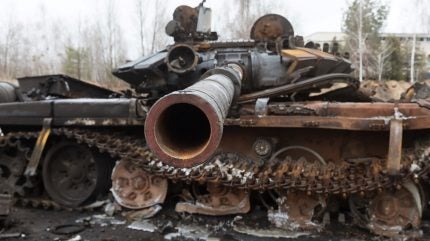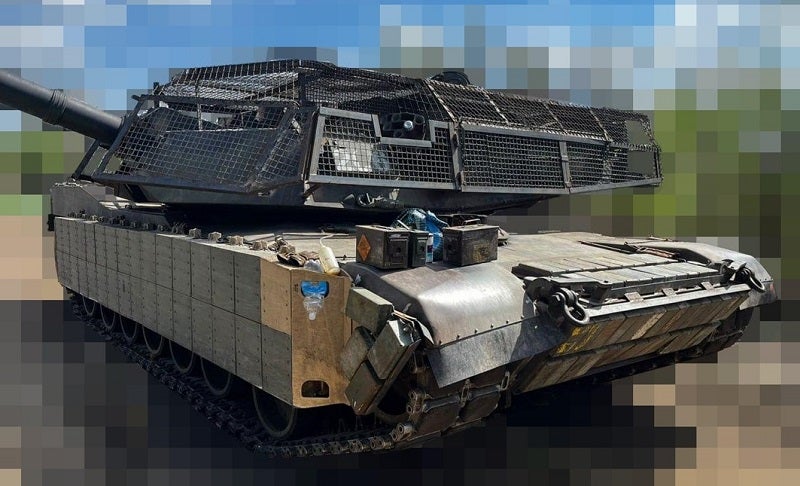
A Ukrainian company named Steel Front has announced it will produce another layer of protection for main battle tanks (MBTs) used by Ukraine’s Armed Forces.
Steel Front is an initiative that brings all the military assistance provided by the businesses in the portfolio of Rinat Akhmetov, a Ukrainian billionaire and former People’s Deputy of Ukraine, under one umbrella.
The company has announced it will kick-start production of steel screens to be fitted around the turrets of the wide variety of MBTs Ukraine has accumulated since Russia invaded its territory more than two years ago. The supplier focuses on fitting its cages to the US-manufactured M1 Abrams as well as Ukraine’s T-64s and its Soviet-era T-72s.
The screens have been designed specifically for each tank type, with the key objective of protecting the soldiers from external threats.
It is also important they do not interfere with the operation of the tank. The screens, which Steel Front is providing free of charge, weigh around 400kg. Each takes ten to 12 specialists and around 12 hours to produce and install.

During the political stalemate in Washington, which prevented US military assistance from continuing to support Ukraine’s war machine, Ukrainian troops became increasingly reliant on First Person View (FPV) drones and loitering munitions as their conventional equipment reduced. These systems are guided by a user wearing a virtual reality headset.
GlobalData intelligence tells us that “such munitions [have been] used to devastating effect in frontline combat, often compensating for Ukraine’s near-constant shortfall in conventional artillery ammunition.”
From January to February in 2024, Ukraine’s Deputy Minister of Strategic Industries claimed that FPV production totalled 200,000.
Furthermore, there have been staggering claims that more than 65% of Russia’s MBTs were destroyed by Ukrainian FPV systems.
FPV drones can be equipped with legacy Soviet-era explosive munitions such as hand grenades, under-barrel grenades, rocket-propelled grenades, rockets, and even large-calibre artillery shells, with the man-in-the-loop guidance providing more accuracy and thus cost-efficiency over conventional fire missions.
FPV drones are catching on
The emergence of this tactic is already having implications in defence procurement circles worldwide as it illustrates a potential efficiency gain whereby a small number of explosive-armed commercial-off-the-shelf drones could provide equivalent kinetic effects to a much larger volume of conventional platforms at reduced cost and risk-to-life.
GlobalData estimates that the global military UAS market will expand from a value of $10.927bn in 2023 to $17.963bn in 2033, growing with a compound annual growth rate (CAGR) of 5.10%. The global drone market was worth $15.2bn in 2020 and will reach $89.6bn by 2030, with the strongest growth coming from commercial drones, which will record a CAGR of 32.6% between 2020 and 2030, rising from $3.4bn in 2020 to $57bn in 2030.
Of course, if Ukraine’s troops have caught onto this new military trend, then so too have the invading Russian forces. On 30 May 2024, one Russian government mouthpiece reported that Russian troops will receive 2,000 Gortenzia 7 FPV drones.





